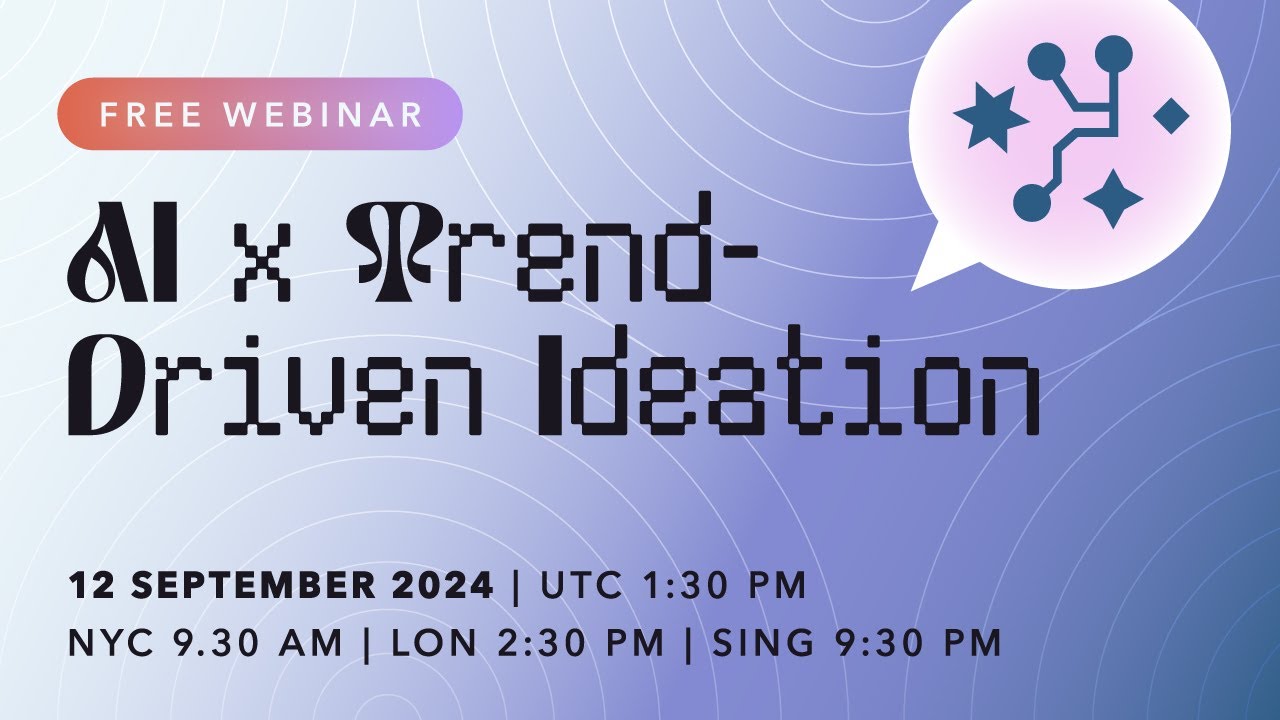Freeing up newsroom time: How Amedia’s AI sandbox will allow reporters to do more
Summary
TLDRThe Innovate Local webinar featured Marcus Rasanen, Director of News at Norwegian Local Media Group A-pressen, discussing the launch of their AI Sandbox for journalists. The tool aims to streamline local newsroom tasks and enhance journalistic efficiency without compromising trust and quality. Rasanen highlighted the importance of using AI responsibly and the potential for journalists to guide product development through their use of the sandbox. The webinar also touched on the challenges of integrating AI into journalism and the need for transparency with readers regarding AI involvement in news creation.
Takeaways
- 🌟 The webinar is part of the 'Innovate Local' program, a global forum for local media professionals to exchange ideas and solutions.
- 📚 The program is designed for news media companies operating within their own geographical communities, focusing on local journalism's unique opportunities and challenges.
- 🤖 Marcus Rasanen, Director of News at Norwegian Local Media Group, discussed the launch of an AI sandbox for journalists, aiming to save time in local newsrooms.
- 🚀 The AI sandbox is a tool that leverages AI to assist journalists in their work, with the goal of enhancing storytelling and local news coverage.
- 🔐 The sandbox prioritizes trust and responsible use of AI, with guidelines to ensure AI is used ethically and does not compromise journalistic integrity.
- 💡 Marcus demonstrated the sandbox's capabilities in a live demo, showing how it can help journalists quickly summarize documents and generate article ideas.
- 📈 The sandbox collects data on journalists' usage patterns to inform future product development and tailor AI tools to better fit the needs of local newsrooms.
- 🛠️ The AI sandbox is a living tool, constantly evolving with input from journalists and developers to improve its functionality.
- 📝 There is an emphasis on transparency with readers, suggesting that journalists should disclose when AI tools have been used in creating content.
- 🌐 The 'Innovate Local' program is accessible on-demand, with webinars and resources available for local media professionals worldwide.
Q & A
What is the purpose of the 'Innovate Local' webinar series?
-The 'Innovate Local' webinar series is the first global forum for local media, designed to create a space where media professionals can exchange actionable and scalable ideas with a focus on opportunities and problems particular to the business of local journalism.
Who are the hosts of the 'Innovate Local' webinar?
-Cecilia Campbell H, the program editor, and Nicholas Yason H, the program director, are the hosts of the 'Innovate Local' webinar.
How often do the 'Innovate Local' webinars take place?
-The 'Innovate Local' webinars take place twice a month, every other Wednesday at 3:00 European time.
What type of topics are covered in the 'Innovate Local' webinars?
-The webinars cover a variety of editorial and business topics that are particularly relevant to local media.
Who is Marcus Rasanen and what is his role in the webinar?
-Marcus Rasanen is the Director of News at Norwegian Local Media Group A/S Media, and he represents one of the founding member companies of 'Innovate Local'. He discusses the AI sandbox launched for journalists and what they hope to achieve with it.
What is the main goal of the AI sandbox launched by A/S Media?
-The main goal of the AI sandbox is to help local journalists save time and improve efficiency in their work by utilizing AI tools, while ensuring data security and maintaining the trust of their readers.
How does the AI sandbox interface work?
-The AI sandbox interface allows journalists to interact with AI tools in a controlled environment. It logs their use to gather data for product improvements and offers functionalities like summarizing articles, generating headlines, and converting text to audio.
What are some of the guidelines established by A/S Media for using AI in journalism?
-Some guidelines include not using photorealistic AI-generated images to illustrate articles, not putting sensitive information into third-party services, and being transparent with readers about the use of AI tools in creating content.
How does A/S Media plan to use the data collected from the AI sandbox?
-A/S Media plans to use the data collected from the AI sandbox to understand the usage patterns and business needs of their journalists. This knowledge will guide the development of their AI tools and influence product development within the company.
What is the 'Editorial AI Hub' and what is its purpose?
-The 'Editorial AI Hub' is an initiative by A/S Media that connects newsrooms, journalists, development resources, and the AI team. Its purpose is to explore innovative ways to use AI tools and to guide the development of AI applications within the organization.
How can other local media companies benefit from the AI sandbox?
-Other local media companies can benefit from the AI sandbox by implementing a similar controlled environment for their journalists to use AI tools efficiently and safely. This can lead to increased productivity, cost-efficiency, and the ability to experiment with various AI functionalities.
Outlines

This section is available to paid users only. Please upgrade to access this part.
Upgrade NowMindmap

This section is available to paid users only. Please upgrade to access this part.
Upgrade NowKeywords

This section is available to paid users only. Please upgrade to access this part.
Upgrade NowHighlights

This section is available to paid users only. Please upgrade to access this part.
Upgrade NowTranscripts

This section is available to paid users only. Please upgrade to access this part.
Upgrade NowBrowse More Related Video

AI × Trend-Driven Ideation | 12 September | TrendWatching

Citizen Journalism is Reshaping the World: Brian Conley at TEDxMidAtlantic

Keren! Aksi Bersih-Bersih Pandawara Group Disorot Media Asing

Sinclair Broadcast Group: Last Week Tonight with John Oliver (HBO)

Business English B1 - B2: Participating in meetings 1

How Journalists Can Use Artificial Intelligence
5.0 / 5 (0 votes)